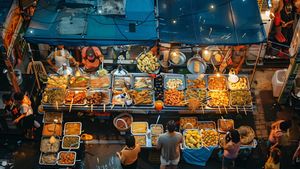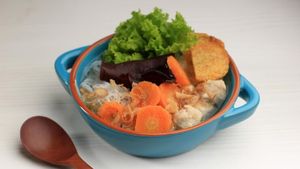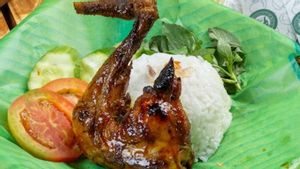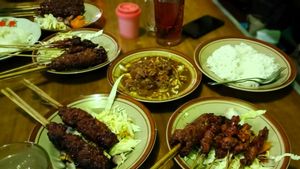YOGYAKARTA Jamu is known as a typical Indonesian concoction that is recognized as an intangible cultural heritage (WBTB) by UNESCO. Through the 18th trial of the Intergovernmental Committee for the Safeguarding of the Intangible Cultural Heritage, reported by the Indonesian Foreign Ministry website, establishing herbal medicine as a cultural heritage. Herbal medicine is believed to have existed since the 8th century which was also found in the reliefs of Borobudur Temple and other ancient manuscripts.
Psychologically, herbal medicine comes from the word djampi which means healing by using ingredients of medicines, prayers, and oesodho meaning health. Launching e-journal Avatara, Department of Historical Education, Faculty of Social and Legal Sciences, Surabaya State University, Friday, August 16, in the reliefs of Kharmawibhangga at Borobudur Temple in the range of 722 AD describes the health sector. In the relief, it tells of several assistances made to sick people, gratitude for healing and health, as well as the birth process.
Based on the meaning of etymology, herbal medicine in KBBI means drugs made from roots, leaves, and so on. Herbal medicine is a concoction of herbs from Indonesia and is served in the form of drinks. To get to know the traditional type of herbal medicine and its benefits, check the following explanation.
Acid turmeric is a herbal medicine made from turmpang turmeric and acid. Kunyit (Curcuma domestica Vahl) is boosted or moisturized and then water is taken. Then mixed with acid (Tamarindus indica L.) so that you get a fresh taste, acid, and add brown sugar tau arena sugar. The acid turmeric herbal medicine is known to be useful to prevent siiawan and is commonly drunk for pain relievers when the moon arrives.
Kencur has a slightly spicy taste mixed with impacted rice so that it becomes a jamu of rice. This herbal medicine is useful for refreshing the body, preventing cough, increasing appetite, and improving the quality of sound. Not a few singers in Indonesia take advantage of the pain as a 'jamu' to get the best sound quality and avoid sore throat.
Cabes that are different from chili peppers used for chili sauce. Cabe or popularly known as Javanese chilies, have the scientific name retrofractum Vahl. This, has a spicy taste. Meanwhile, Puyang, with the scientific name Zingiberzerumbet, has a bitter taste. This bitter and spicy combination of puyang, useful for recovering fatigue, increasing appetite, and preventing the wind.
The next type of traditional herbal medicine, made from padaoto leaves (Andrographis Paniculata Ness) and brotowali (Tinospora crispa), pule (Alstonia scolaris L. R. Br.), sea widoro (Strychnos ligustrina), and added adas (Foeniculum vulgare). Mixture of the material produces a bitter taste. But behind the bitterness, this traditional herbal medicine is believed to clean blood, cure itching, and prevent allergies. Usually, after drinking bitter bitter bitter bitter bitter herbs are neutralized by drinking asem turmerin.
This herbal medicine is made from a key meeting (boesenbergia guide), turmeric, ginger, betel (Piper betle), kencur (Kaempferia galangal), kappaga (Amomum compactum), cinnamon, Javan acid, lemongrass, and lime. The mixture produces a bitter, sour, and spice combination of flavors. Launching the Pharmacy Scientific Journal, Faculty of Pharmacy, Padjadjaran University, herbal key to be proven by several studies as an anti-cancer drug.
Complaining about the many benefits. In addition to being used for natural dyes on a cloth, it is also mixed into traditional herbs called cumu laos. Jamu kudu laos, is a mixture of condensed fruit (Morinda citrifolia) and enveloping (Alpinia galangal). These mixed products get a unique and beneficial taste in managing blood pressure and reducing cholesterol.
SEE ALSO:
Jamu uyu-uyup is also known as bloating. This type of traditional herbal medicine is useful in anti-inflammatory, antioxidant, and helps produce breast milk in breastfeeding mothers. Jamu uyup-uyup ingredients, including kencur, ginger, bangle (Zingiber montanum), lengkuas, turmeric, and temur tumur (Curcuma heyneana).
Sinom is called a light acid leaf in Javanese. It is also a sinom herbal ingredients that are grown and added Javanese acid water. Also added sugar palms or brown sugar to get a fresh sweet acid taste.
Those are the eight popular types of traditional Indonesian herbal medicine. Are there herbal medicines other than the list above that are popular in your residence?
The English, Chinese, Japanese, Arabic, and French versions are automatically generated by the AI. So there may still be inaccuracies in translating, please always see Indonesian as our main language. (system supported by DigitalSiber.id)


















